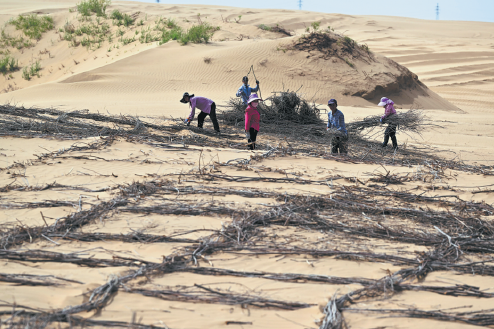Extreme climate makes disaster monitoring difficult


Editor's Note: Against the backdrop of global climate change, the risk of geological disasters occurring in traditionally low-risk regions has risen significantly. In an interview with ThePaper.cn, Wang Lichao, deputy director of China Institute of Geo-Environmental Monitoring, said this shift means that every region must be prepared to deal with sudden geological disasters under extreme conditions. Below are excerpts from the interview. The views don't necessarily represent those of China Daily.
Extreme heavy rainfall has become more frequent due to global climate change, posing tremendous challenges to the prevention and control of geological disasters. The number of disasters occurring in regions and periods traditionally considered non-priority areas for prevention has increased in recent years. Rainfall remains the most significant factor inducing geological disasters, and the combined impact of rainfall and the engineering activities of humans has further increased the risk of disasters.
Extreme climate makes it more difficult to detect hidden dangers. Heavy rainstorms or abrupt shifts between drought and flooding often trigger small-scale collapses and landslides. But the disasters are "sudden", and clear early-warning signals are not easily detected using traditional monitoring methods.
Accordingly, China has built a monitoring and early-warning system that combines human-based prevention with technological prevention.
Human-based prevention is a mass monitoring and prevention network, in which ordinary citizens patrol, inspect and provide macro-level phenomenon-based warnings. Currently, there are nearly 300,000 sets of monitoring equipment across the country, forming an important force in the monitoring and early-warning system.
Technological prevention involves meteorological risk warnings and automated monitoring for geological disasters. Meteorological risk warnings are targeted at the regional scale and give forecasts for the next 72 hours, early warnings for the next 24 hours and short-term warnings for the next 6 hours and 3 hours at the city and county levels respectively. This system of prediction, forecasting and warning helps improve the spatiotemporal precision of early warnings and supports disaster preparedness and emergency response.
China's geological disaster monitoring and early-warning system faces three main challenges. The first comes from the extreme climate change. The westward and northward shift of rain belts, along with frequent extreme rainstorms, has sharply increased the risk of disasters in areas previously considered non-priority zones.
The second challenge is compounding and cascading disasters. In recent years, extreme rainfall and strong earthquakes have triggered complex disaster chains. For example, debris from a landslide may create a barrier and cause the flooding of a lake. The destructive power of such disaster chains multiplies, rendering traditional single-disaster, single-focus monitoring and warning methods inadequate.
The third challenge is the limitations of equipment and technological bottlenecks. Automated monitoring devices currently being used are well-suited for landslides but may not be adequate for dangerous rock collapses and debris flows in the watershed areas. Their reliability in mountainous areas, and under extreme conditions such as rainstorms and strong earthquakes is also questionable while their ability to integrate and analyze different types of data from various sources needs improvement.
Post-disaster reconstruction is also an important aspect of disaster management. While adhering to scientific and objective assessment principles, it must also respect local socioeconomic development levels and customs. The "integrated watershed management" model can be explored, under which resources from various departments are integrated to achieve the overall benefit of "restoring one area, benefiting one area". Reconstruction work must follow certain rules. Across-the-board relocation should be avoided, as should hasty short-term measures.


































